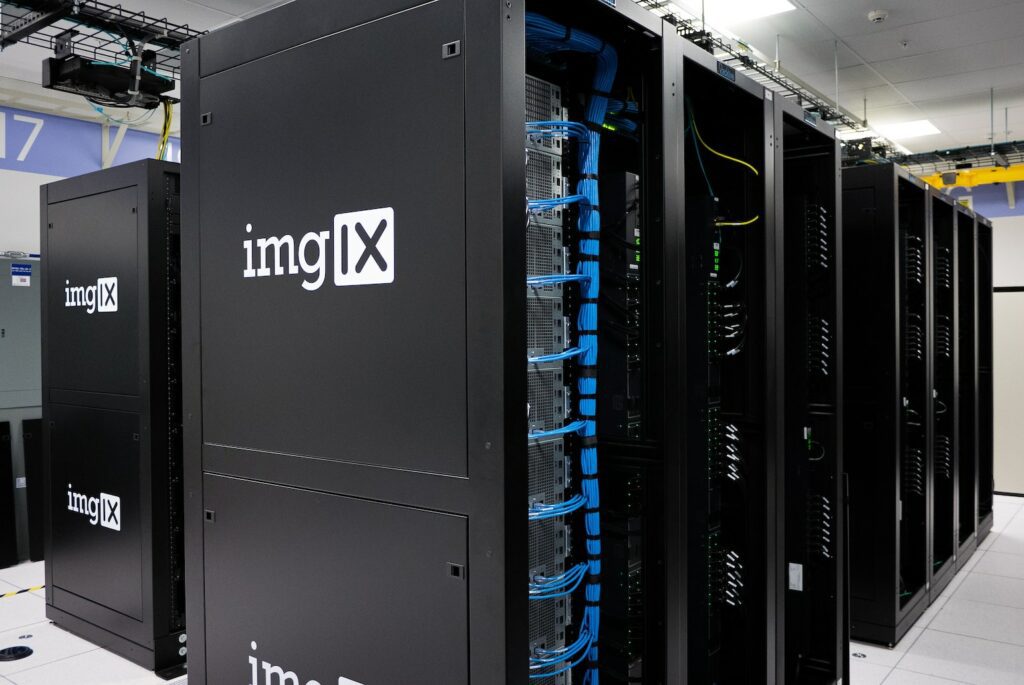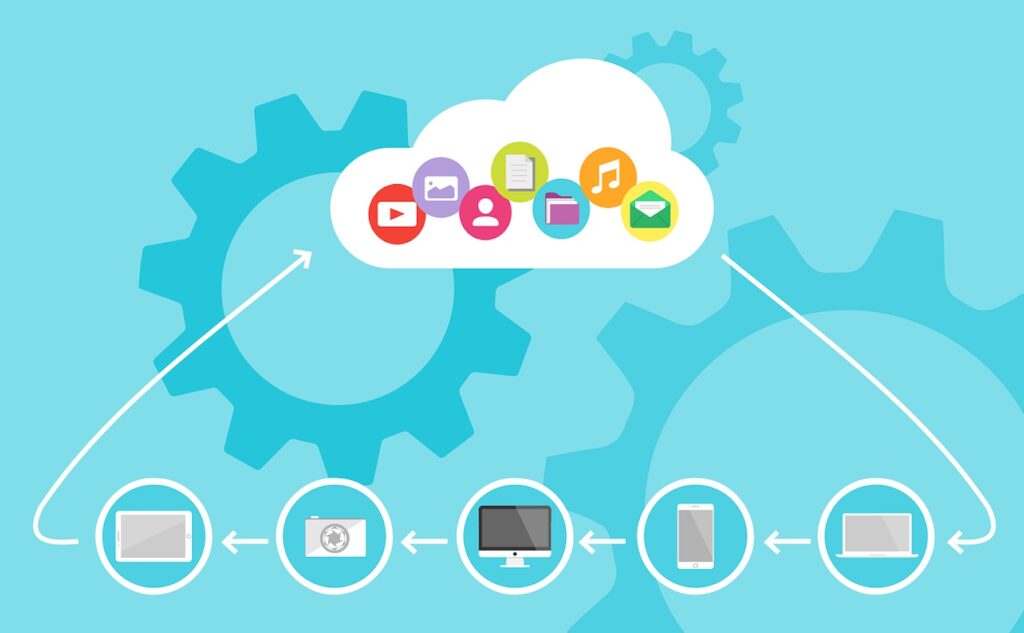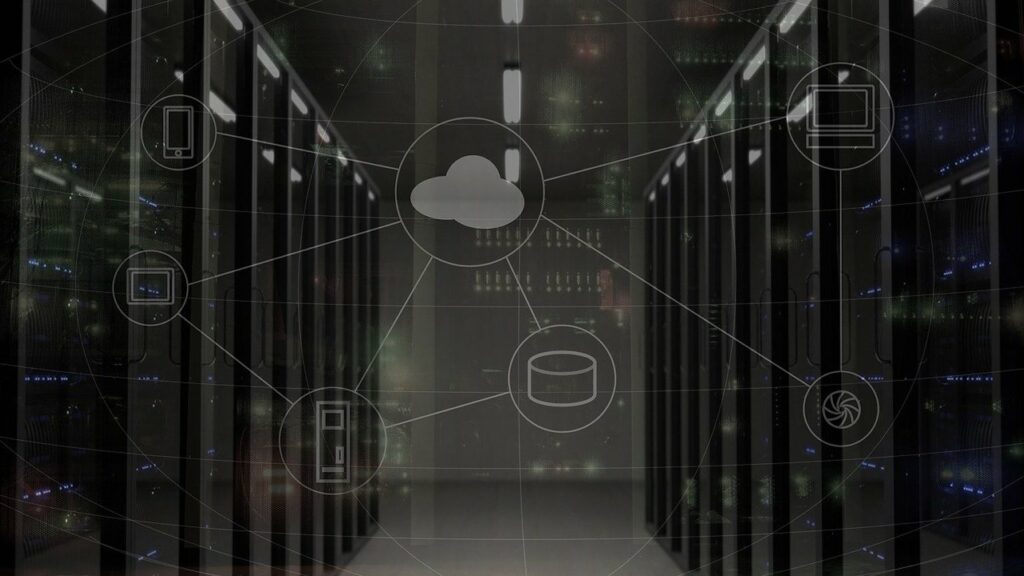Cloud computing is growing at a rapid pace: In fact, it’s projected that the market will amount to $832.1 billion by 2025. With remote work on the rise, cloud computing is more popular than ever.
But what exactly is “the cloud” and what is cloud computing? In this post, I’ll give an introduction to cloud computing as a concept. What is the cloud and how does it work? Are there different types of cloud computing? What are the advantages of cloud computing for companies? What kinds of cloud computing jobs are out there (and what cloud computing courses can help you train for them)?
Lots of ground to cover — let’s dive in!
Table of Contents
- What Is the Cloud?
- What Is Cloud Computing?
- Pros & Cons of Cloud Computing
- 3 Cloud Computing Jobs
- The Future of Cloud Computing
Disclosure: I’m a proud affiliate for some of the resources mentioned in this article. If you buy a product through my links on this page, I may get a small commission for referring you. Thanks!
What Is the Cloud?
What is the cloud and how does it work? “The cloud” refers to software and services that are stored on internet servers, instead of locally on your computer’s hard drive.
☁️ As cool as the name sounds, cloud servers aren’t actually in the sky; they have physical locations in data centers all over the world. A data center is a space inside of a building that houses computer systems and other components.

For example, when you use Google Docs to write something, it’s stored in the cloud (not on your computer like Microsoft Word documents are). You can access your Google Drive content from any device as long as you have an internet connection, thanks to cloud technology.
Cloud computing also gives you the ability to log in to your Instagram or Twitter account from any device, even if your phone or computer breaks.
Some cloud based software started out as regular, non-cloud programs. For instance, Adobe Photoshop used to be an application you purchased once and stored locally on your computer. Now, you can only get Photoshop through the cloud with a paid Creative Cloud membership.
Start coding now
Stop waiting and start learning! Get my 10 tips on teaching yourself how to code.
How Does the Cloud Work?
Every cloud application has a host that is responsible for managing and maintaining the physical data centers. Top companies hosting the cloud include Amazon (Amazon Web Services), Microsoft (Azure), Apple (iCloud), and Google (Google Drive).
The “front end” is your computer/device. The “back end” is the cloud. The front end allows you to use the internet to access data stored in the cloud. The back end is made up of servers, computers, databases, etc.
Cloud storage, for example, is asking a remote computer in some data center somewhere to store a file instead of asking your local hard drive to do it.
🖥️ Put simply, the cloud works by having a bunch of computers located somewhere else, and then asking them to do things instead of doing them locally on your personal computer.
☝️ Back to the table of contents
What Is Cloud Computing?
So now that you know what the cloud is, what is the definition of cloud computing? Cloud computing is the delivery of computer system resources (e.g., servers, storage, databases, networking, software, analytics) over the internet.

Cloud computing allows companies to minimize IT infrastructure costs because they don’t have to buy any hardware or software, or set up data centers. Instead of businesses owning their own costly equipment, they can essentially “rent” access from a cloud storage provider.
There are three main types of cloud computing deployment models:
- Public cloud: Owned and operated by a third-party cloud service provider, such as Microsoft Azure and Amazon Web Services (AWS). Companies can access these cloud services by using a web browser.
- Private cloud: Cloud infrastructure operated exclusively for a single business or organization. Unlike public cloud, services and infrastructure are maintained on a private network. Companies still have to manage a physical data center.
- Hybrid cloud: Combines public and private clouds and allows data to move between them.
There are also differences in the types of cloud based software and services produced for businesses vs individual consumers.
Consumer vs Business Cloud Services
There’s a difference between cloud based software for regular people and the types of cloud computing used for businesses.
Consumer cloud based software is built for individuals to use. Many cloud apps are free (like Google Docs or Instagram), but some are paid with a monthly subscription like Dropbox or Adobe Creative Cloud).
Enterprise business cloud based software, on the other hand, focuses more on security of information, ensuring compliance to regulations, and optimizing business processes.
There are three popular types of cloud service offerings for businesses:
- IaaS (Infrastructure as a Service): A form of cloud computing that offers businesses computing, storage, and networking resources on a pay-as-you-go basis. Examples include AWS EC2, Rackspace, and Google Compute Engine (GCE).
- PaaS (Platform as a Service): A cloud computing model that provides hardware and software tools over the internet and helps businesses create custom applications. PaaS tools are used by software developers to help them build software or apps. Examples include AWS Elastic Beanstalk, Heroku, and Windows Azure.
- SaaS (Software as a Service): Delivers applications over the internet. SaaS software is often licensed on a subscription basis. Examples include Salesforce, Dropbox, and Slack.
These options mean there are countless benefits of cloud computing for businesses. It makes it simple for companies to access crucial services without needing to maintain a ton of IT resources themselves.
Consumer Cloud Computing Examples
You’re probably using cloud computing right now! If you’re watching a movie on Netflix, listening to streaming music, sending an email, storing a photo, or playing an online game, odds are you’re taking advantage of cloud computing.

Other examples of the cloud include:
- Backing up your smartphone
- Streaming audio/video
- Testing and building applications
- Creating cloud-native apps (i.e., cloud first with tech like containers, microservices architecture, DevOps)
- Storing files
In short, there are a ton of useful things people and businesses can do with the cloud.
☝️ Back to the table of contents
What Are the Benefits of Cloud Computing? Pros & Cons
We’ve already touched on some of the advantages of cloud computing, but are there drawbacks too? Let’s quickly sum up some things to consider.
✅ Pros of cloud computing:
- Reduced costs: Data centers require 24/7 electricity for power and cooling and that can add up quickly. The cloud solves that problem for businesses.
- More storage: Cloud computing allows you to store more than your computer can possibly hold locally.
- Speed: Most cloud computing services are available on demand, as long as you have a good internet connection.
❌ Cons of cloud computing:
- Privacy & security: Your info could be vulnerable to hackers who could break into your cloud provider’s servers.
- Downtime: If you lose internet access, you lose access to the things you need.
- Performance can be inconsistent, especially since servers are being shared by so many people.
Ultimately, if you’re storing sensitive information or want to be able to access documents/photos/services even if your internet is out, it’s a good idea to have an off-cloud copy.
☝️ Back to the table of contents
Start coding now
Stop waiting and start learning! Get my 10 tips on teaching yourself how to code.
3 Cloud Computing Jobs
If you’re interested in working for cloud computing companies, there are a few different career paths you can look at. Let’s look at three cloud computing jobs, skills you need for them, what kind of cloud computing salary each role pulls in on average, and cloud computing courses to get you started down the career track.

Cloud Engineer
Cloud engineers build and maintain cloud infrastructure.
- 💰 Average salary: $117,902/year
- 💡 Skills needed: Linux, cloud service providers, virtualization, load balancing
Courses to get started:
- Become a Hybrid Cloud Engineer on Udacity
- Preparing for Google Cloud Certification: Cloud Engineer Professional Certificate on Coursera
Cloud Architect
Cloud architects transform the technical requirements of a project into the architecture and design of a company’s computing strategy.
- 💰 Average salary: $133,035/year
- 💡 Skills needed: Linux, TCP/IP, IP addresses, programming or scripting language, cloud platforms and technologies, knowledge of Docker and Kubernetes
Courses to get started:
- Become an AWS Cloud Architect on Udacity
- Ultimate AWS Certified Solutions Architect Associate 2021 on Udemy
Cloud Consultant
Cloud consultants specialize in cloud systems; they suggest and help implement the right solutions based on a business’s needs. Part sales, part technical role.
- 💰 Average salary: $126,196/year
- 💡 Skills needed: In-depth knowledge of cloud service providers, customer service skills, operating systems
Course to get started:
- Build Your Knowledge of Cloud Administration Learning Path on LinkedIn Learning
- Salesforce Service Cloud Consultant Certification Course on Udemy
Other cloud computing courses
Here are a few more courses to give you an overview of cloud computing skills:
- Fundamentals of Cloud Computing on Pluralsight
- Intro to Cloud Computing on Udacity (free)
- MicroMasters® Program in Cloud Computing on edX
☝️ Back to the table of contents
The Future of Cloud Computing
There’s no denying it: Cloud computing is the future. Just think about all the apps and services you use — how many of them already use cloud computing? (Hint: it’s probably even more than you’d think!)
As the industry only continues to grow, learning cloud computing basics now is a great idea. Whether you just want to be a savvy cloud consumer or pursue cloud computing jobs in the future, it can’t hurt to join a cloud computing course or two and see if it clicks!

